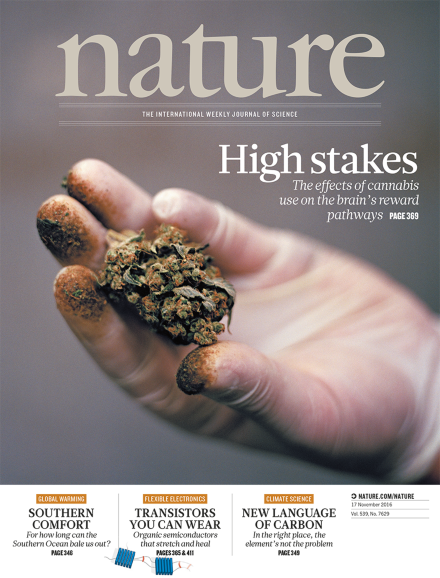Volume 539 Issue 7629, 17 November 2016
Editorial
World View
Research Highlights
Seven Days
News
News Feature
Comment
Books & Arts
Correspondence
Obituary
News & Views
Review Article
Article
Letter
Corrigendum
Erratum
Corrigendum
Feature
Q&A
Futures
Nature Index
-
How they stack up
Nature Index:
-
Applying local knowledge
Nature Index:
-
A guide to the Nature Index
Nature Index:

